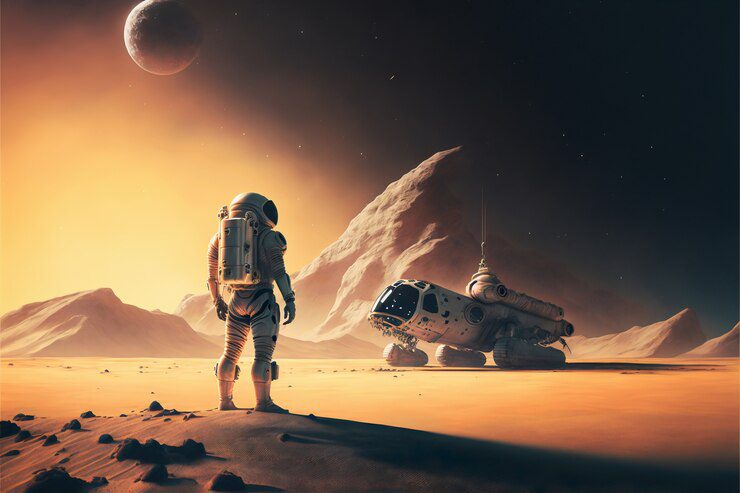For millennia, humans have gazed at the stars, dreaming of venturing beyond our earthly cradle. Today, that dream inches closer to reality, fueled by a whirlwind of technological advancements. The future of space exploration tech is ablaze with innovation, promising to reshape our understanding of the cosmos and unlock possibilities once confined to the realm of science fiction. Buckle up, space enthusiasts, because we’re about to embark on a thrilling journey through the frontier of space tech.
Small Satellites, Big Impact
Forget the behemoths of yesteryear. The future belongs to the nimble and efficient. Miniaturization is revolutionizing satellite technology, enabling constellations of small satellites to perform tasks previously requiring single, monstrous spacecraft. These “smallsats” are cheaper to launch, more versatile, and can be deployed in vast networks, offering unparalleled data collection and communication capabilities. Imagine a swarm of these miniature marvels mapping the Martian surface in high resolution, or a network monitoring Earth’s climate with unprecedented detail.
3D Printing in Space: From Pixels to Parts
Imagine astronauts not just repairing spacecraft, but actually printing replacement parts on demand. 3D printing is poised to become a game-changer in space, allowing for on-site manufacturing of essential tools, components, and even habitats. This technology eliminates the need for bulky pre-manufactured spares, reducing launch weight and costs. Picture a lunar base printing its own solar panels or a Martian colony building its own research equipment – the possibilities are as vast as the cosmos itself.
Artificial Intelligence: The Co-Pilot of the Future
Humans are brilliant, but we’re not perfect, especially in the unforgiving environment of space. Enter artificial intelligence (AI), our future co-pilot on cosmic voyages. AI can analyze vast datasets, identify anomalies, make real-time decisions, and even control complex spacecraft maneuvers. Imagine an AI-powered rover autonomously navigating the Martian terrain, or an AI system monitoring astronaut health and suggesting optimal treatment plans. AI will not replace humans, but it will augment our capabilities, making space exploration tech safer, more efficient, and more productive.
Nuclear Fusion: Powering the Deep Space Leap
The vast distances of interstellar space pose a significant challenge to traditional rocket fuels. Nuclear fusion, the process that powers stars, holds the key to unlocking the cosmos. By harnessing the immense energy released when atoms fuse, we could create ultra-efficient engines capable of propelling spacecraft to unimaginable speeds. Imagine a fusion-powered spacecraft reaching the nearest star system in a fraction of the time it would take with current technology. The possibilities are mind-boggling, from interstellar travel to exploring the farthest reaches of our own solar system.
Bioprinting: Growing Organs in Space
The human body struggles to adapt to the harsh realities of space travel. Bioprinting, the process of creating tissues and organs using 3D printing technology, could revolutionize space medicine. Imagine astronauts “printing” replacement organs for themselves or injured crewmates, mitigating the risks of long-duration space missions. This space exploration tech could also pave the way for establishing self-sustaining bio-labs in space, enabling research and development of cures for diseases plaguing humanity.
The Eyes Have It: Advanced Sensing Technologies
Our understanding of the universe hinges on our ability to observe it. Thankfully, the next generation of sensors is poised to revolutionize how we gather data. From hypersensitive cameras capable of capturing faint starlight to spectrometers that unlock the secrets of distant exoplanets, these advancements will allow us to peer deeper into the cosmos than ever before.
Beyond Human Reach: Robotics Take the Lead
While human exploration will undoubtedly continue, robots are becoming our invaluable partners in venturing into the unknown. From nimble rovers exploring Martian landscapes to sophisticated space robotics delving into the ice-covered oceans of Jupiter’s moon Europa, these tireless machines can withstand harsh environments and conduct complex tasks beyond human endurance.
The Human Factor: Collaboration and Sustainability
Technological advancements are crucial, but they cannot propel us forward alone. International collaboration and a commitment to sustainable practices are equally important. Shared goals and resources will enable us to achieve more together, while responsible space exploration tech ensures we preserve the delicate environment of our solar system for future generations.
Conclusion
These are just a glimpse of the tech innovations propelling us toward the next giant leap in space exploration. The future is bright, filled with possibilities that would have astounded even the most visionary pioneers. As we continue to push the boundaries of technology, the cosmos beckons, promising answers to age-old questions and revealing wonders yet to be imagined. So, fasten your seatbelts, spacefarers, for the journey is just beginning!







